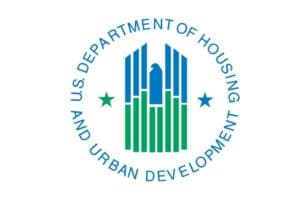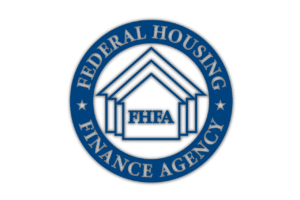HUD issued a notice on implementing several sections of the Economic Growth, Regulatory Relief, and Consumer Protection Act (S. 2155 of the 115th Congress) that was signed into law by President Trump on May 24, 2018. Section 209 of the bill made several amendments pertaining to small public housing agencies (PHAs) that administer 550 or fewer combined public housing units and vouchers under section 8(o) that predominantly operate in a rural area. HUD is specifically seeking comments on the following:
- Section 209(a). Small PHAs
Section 209(a) of the Economic Growth Act amends Title I of the 1937 Act by adding a new section 38 that defines small PHAs (i.e., PHAs that administer 550 or fewer combined public housing units and vouchers under section 8(o) that predominantly operate in a rural areas, as described in 12 CFR 1026.35(b)(2)(iv)(A)). New section 38 also streamlines certain requirements related to program inspections and evaluations. - Section 38(a) of the 1937 Act—Definitions. New section 38(a) establishes the definitions applicable to the other provisions of section 38. Specifically, section 38(a) provides definitions for “Housing Voucher Program,” “Small Public Housing Agency,” and “Troubled Small Public Housing Agency.”
Implementation action: The definitions require further clarification via rulemaking for implementation. For example, the definition of “Small Public Housing Agency” includes PHAs that administer no more than 550 dwelling units and vouchers under section 8(o) of the 1937 Act and “predominantly operate in a rural area,” as described in 12 CFR 1026.35(b)(2)(iv)(A). (2) This phrase “predominately operate in a rural area” requires further clarification and interpretation by HUD. Further, the definitions apply to statutory provisions that, as discussed below, require notice and comment rulemaking for implementation. HUD is undertaking rulemaking to implement these provisions and will address the definitions in the broader context of the rules implementing the related provisions.
(i) How should HUD interpret the words “predominantly operates” in the phrase “predominantly operates in a rural area”? For example, a PHA could be deemed to predominantly operate in a rural area if one or more of the following conditions apply: (1) The PHA’s physical address is in a rural area (a PHA-based definition); (2) more than 50 percent of the buildings occupied by Housing Choice Voucher beneficiaries and public housing residents are in rural areas (a building-based definition); or (3) more than 50 percent of the tenants served live in rural areas (a household-based definition). Please note that HUD is not seeking comment on the definition of “rural area” as this is provided in statute.
(ii) How often should HUD reassess the rural nature of each PHA? For example, should HUD reclassify PHAs every time the Office of Management and Budget, the U.S. Census Bureau, or the U.S. Department of Agriculture’s Economic Research Service updates data used in the definition of rural areas? Also, the “predominately operates” component may change when buildings are added or lost, or when tenants move under a household-based definition.
(iii) Are there other factors or approaches that HUD should consider in determining whether a PHA predominantly operates in a rural area?
(iv) Are there factors that HUD should consider in determining whether a PHA meets the criteria of administering 550 or fewer combined public housing and section 8(o) units?
- Sections 38(c)(1) and (c)(2) of the 1937 Act—Program Inspections and Evaluations for Public Housing and Section 8 Voucher Units. Section 38(c)(1) as inserted by the Economic Growth Act requires HUD to inspect small PHA projects no less than every 3 years. Section 38(c)(1) also applies existing physical inspection standards for projects assisted under section 8 of the 1937 Act to small PHAs. Section 38(c)(2) requires small PHAs administering section 8 voucher rental assistance to make periodic physical inspections of dwelling units at least once every 3 years. (3)
Implementation action: This provision requires further review and interpretation by HUD. HUD is considering the appropriate scope of the term “projects assisted under section 8” as used in section 38(c)(1) and will address the subject more fully in future rulemaking. Further, as noted above, the definition of small PHA requires further consideration and implementation through rulemaking.
- Section 38(c)(3) of the 1937 Act—Troubled Small PHAs. Section 38(c)(3) as inserted by the Economic Growth Act identifies criteria for troubled small PHAs and establishes an appeals process under which a small PHA may dispute a designation as a troubled small PHA. The new section also establishes requirements for Corrective Action Agreements under which designated troubled small PHAs shall undertake actions to correct identified deficiencies.
Implementation action: Section 38(c)(3) of the 1937 Act requires HUD to issue regulations to establish the appeals process and determine how Corrective Action Agreements may be tailored for individual troubled properties. HUD is developing these regulations.
- Section 38(d) of the 1937 Act—Reduction of Administrative Burdens. Section 38(d)(1) as inserted by the Economic Growth Act exempts small PHAs from any environmental review requirements with respect to development or modernization projects costing no more than $100,000. Section 38(d)(2) requires HUD, by regulation, to streamline procedures for environmental reviews for those small PHAs with development or modernization projects costing more than $100,000.
Implementation action: Section 38(d)(2) requires HUD to issue regulations to determine criteria for applicable development and modernization projects. By statute, section 38(d)(2) requires HUD to issue regulations to establish streamlined procedures for environmental reviews. HUD is developing these regulations.
How should HUD define the $100,000 total cost threshold for development or modernization project costs? For example, what types of costs should be included? Should costs associated with disposition and conversion actions be treated as development or modernization costs?
- Section 209(b). Energy Conservation
Section 209(b) of the Economic Growth Act amends the Operating Fund requirements in section 9(e)(2) of the 1937 Act to authorize a small PHA (as defined in the new section 38(a), discussed above) to elect to be paid for utility and waste management costs for a period of not more than 20 years based on its average annual consumption during the preceding 3-year period.
Implementation action: Section 209(b) requires rulemaking to modify existing procedures in a manner that is least disruptive to the existing Operating Fund formula funding cycle, as well as to the policies and procedures that currently govern utility reimbursements, savings, third party agreements and financing, while at the same time enabling small PHAs to utilize the additional flexibility provided by section 209. For these provisions, PHAs and owners may not use the provisions of the Economic Growth Act until HUD issues a rule. Further, and as discussed above, the new definition of small PHA necessitates further consideration by HUD and implementation through rulemaking.
(i) The statute states that: “The Secretary shall make an initial one-time adjustment in the consumption base level to account for differences in the heating degree day average over the most recent 20-year period compared to the average in the consumption base level.” What are good sources for obtaining 20 years of heating degree day data? What resources, computer analysis programs, databases, or websites could HUD consult to determine utility consumption adjustments to account for temperature variations relative to the most recent 20 years?
(ii) The statute permits PHAs to use savings for either Capital Fund or Operating Fund eligible expenses. PHAs with less than 250 units can follow PIH Notice 2016-18 (4) or a successor notice on the flexible use of operating funds. To the extent that PHAs with more than 250 units use this flexibility to expend operating funds for capital purposes, they will need to document the savings, and track the expenditure of the funds. What methods for tracking and reporting on the expenditure of such operating funds would enable monitoring, but limit burden to PHAs?
- Section 209(c). Reporting by Agencies Operating in Consortia
Section 209(c) of the Economic Growth Act requires HUD to develop and deploy electronic information systems to accommodate full consolidated reporting by PHAs electing to act in consortia.
Implementation action: This provision requires HUD to develop and deploy electronic information systems no later than 180 days after enactment of the Economic Growth Act (November 20, 2018). HUD is developing such electronic information systems and will keep program participants updated as necessary to facilitate transition to the new systems.
What are the current limitations with HUD’s systems that prevent full consolidated reporting by PHAs engaged in consortia? What improvements to HUD’s systems should HUD consider for such reporting?
- Section 209(e). Shared Waiting Lists
As discussed above, section 209(e) of the Economic Growth Act requires HUD to make available one or more software programs that will facilitate the voluntary use of shared waiting lists by PHAs and owners receiving HUD assistance. While the requirement that HUD make available software programs is self-implementing, HUD is also required to publish guidance for implementing such lists.
Implementation action: This provision requires HUD to make available software and publish guidance no later than one year after enactment of the Economic Growth Act (May 24, 2019). HUD is exploring options for implementing the required software and will publish required guidance accordingly.
(i) Because the statute refers to software that supports the use of “shared waiting lists” by PHAs and owners receiving HUD assistance, HUD seeks public input on the definition of a “shared waiting list.” HUD is considering defining “shared waiting list software” as software that enables a household to submit a single application to get on multiple waiting lists. One of the most commonly cited examples of a shared waiting list is the Massachusetts Section 8 Housing Choice Voucher Centralized Waiting List that serves about 100 PHAs. Despite its name, the Centralized Waiting List is not a single waiting list used by the participating PHAs. Instead, this is a single application system that generates a unique waiting list for each PHA by sorting all applicants based on the PHA’s preferences, which typically include a local preference for households living or working in the PHA’s jurisdiction.
(ii) What types of PHAs and owners might be the best candidates for a shared waiting list?
(iii) Do owners receiving HUD assistance have unique needs that may make it difficult for them to use a shared waiting list?
(iv) Would there be a need for additional software security in providing access to, and using, a shared waiting list?
(v) HUD also encourages the submission of examples where PHAs or owners have used shared waiting lists and seeks opinions regarding the need for HUD to provide software support for this function and what form this support might take.
Comments should be submitted by April 15, 2019 to the Regulations Division, Office of General Counsel, Department of Housing and Urban Development, 451 7th Street SW, Room 10276, Washington, DC 20410-0500 or electronically here.


